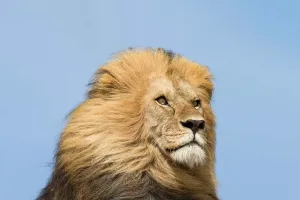Among all animals in nature, the family of cats has high popularity, such as lions and tigers, one known as the "king of the grassland" and the other is called the "king of forests".
However, the family of cats is huge. In addition to the lions and tigers we are familiar with, there are many equally powerful and beautiful beasts.
For example, the big cat we are going to talk about today is not as good as lion tigers in terms of popularity and strength, but it is also full of charm.
Cheetah's body is very slender, with a small head and long legs. Cheetah's spine is very soft and easy to bend, like a large spring. It is precise because they have this streamlined figure that they are very light and fast when they run.
The newborn cheetah is with a part of the mane. From about the third month, the mane on their bodies gradually faded, but the disappearance time may continue for a long time.
Some cheetahs still have mane after the age of two. The newly-born cheetah grows quickly, and it will grow to half of the adult shape when six months. Probably at this time, they started to learn hunting skills.
Compared with cats such as lions, tigers, leopards, and other cats, it is difficult to confront them. Many carnivores on the grassland are used to hunting at night. The cheetah is accustomed to hunting during the day.
Such a choice can help them effectively avoid other large carnivorous animals, and at the same time avoid their possibility of injury.
When it comes to cheetah, the first reaction of most people is that it is fast. The first scene that emerged in our minds was what the cheetah was galloping.
Indeed, Cheetah is the fastest-running animal on land. Although they can only be hunting at a speed of 64km/h, the speed sprint speed of a Cheetah at 100 meters can reach 112km/h, and there are almost no animals on the land that can catch up with it.
The reason why Cheetahs can run so fast is due to their unique body structure. We observed its entire form, which seemed to be born for speed. Cheetah's weight is light, the spine is long and flexible, and the strong and slender muscles on the body can drive forward.
Cheetah's huge nasal cavity can help it breathe in oxygen at a high speed to ensure the normal flow of blood to maintain good health. This allows cheetahs to take about three seconds from 0 to 95km/h. The powerful instantaneous speed makes the cheetah's explosive power very strong.
But when the cheetah keeps running at a high speed, it can only run for up to 3 minutes. Cheetah's physiological structure allows the cheetah to slow down after running quickly, otherwise, they will die due to overheating in the body.
Although the cheetah runs quickly, it is only about ten kilometers every day. In fact, the success rate of cheetah hunting prey is not high.
Cheetah has been widely distributed throughout history, including West Asia, Central Asia, and central India, as well as the entire African continent. India was also the main origin of Asian cheetahs.
However, in the first decades of the 20th century, there were a few cheetahs (only about 200, most of them were artificially raised), and other parts of Asia had no trace of them.
The number of cheetahs living in Africa is also decreasing. At present, there are only about 10,000 cheetahs in Africa cheetahs, and they have been included in the Dangerous Species List of the World Nature Conservation Alliance. The Asian cheetah subspecies are listed as a higher level.


